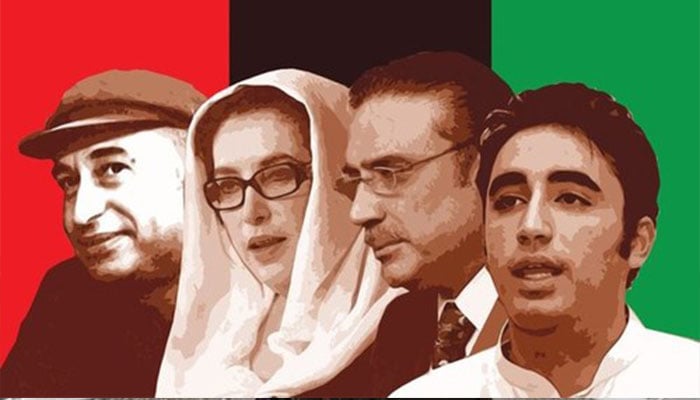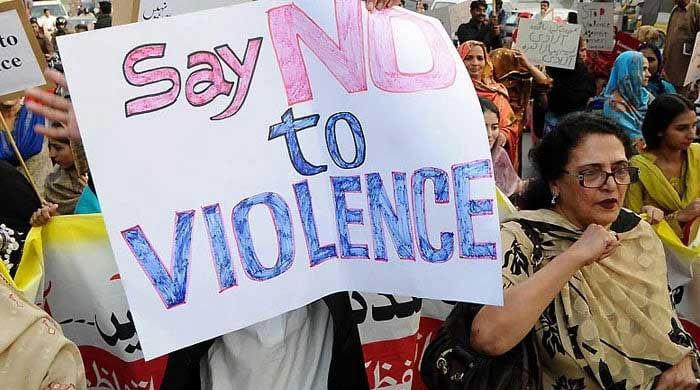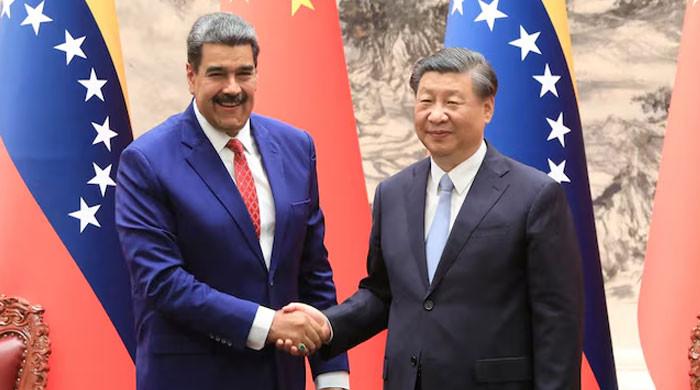Is the party over?
The PPP carried the day because of three assets: a social democratic ideology, a charismatic leadership and representation of the working class
December 11, 2017

When the Pakistan People’s Party was founded fifty years ago, Asif Ali Zardari was twelve years old. When Asif Zardari married Benazir Bhutto in 1987, the PPP was 20 years old and Zardari was 32. To quote Lady Diana, it was a bit crowded for a marriage, because of the PPP in it. If we factor in two humans and one political entity in the knot, it was a union of opposites. However, unlike alchemy, where a union of opposites is celebrated, there was no magic in the marriage.
At 50, the PPP has come full circle. There is a lot to celebrate and a lot to mourn. Fifty years ago, Pakistan’s politics was dominated by giants, many of whom had struggled against imperialist rule and for whom chains had been the reward for politics, as Shorish Kashmiri has put it. Yet, it was Bhutto who represented the spirit of the time, who symbolised the aspirations of the voiceless majority and a rising restless, educated middle class.
The PPP carried the day because of three assets: a social democratic ideology, a charismatic leadership and representation of the working class. It is the loss of these three things that represent the current crisis of the party.
Our ulema have a great talent for associating sin with any term they find politically challenging. Socialism was one such category. It required Bhutto’s genius to sell his brand of social democracy to a society that was far more conservative than our society today.
The PPP’s heretic ideology also symbolised its defiance of the politics of clientelism. (Clientelism is a patronage system in which individual voters receive benefits in return for votes). Clientelism, an established currency in South Asian politics, was further strengthened by Ayub Khan’s dictatorship through his system of local government known as Basic Democracies.
The PPP appealed directly to the people on the basis of a progressive agenda of social, economic and political change. It had epic success as people still tell stories of electric polls ie socially insignificant candidates defeating the established, powerful politicians.
Politics of patronage is hard to do away in a country where the state and its institutions fail to deliver so badly. Once in power, the PPP reverted to clientelism, to some extent at least. The downward slide continued with time, but the PPP’s ideology retained some credibility, at least as a rhetorical device till Benazir was alive. Under Zardari, the PPP has become clientelism incarnate. What is even worse is that it does not have the capacity to sustain networks of patronage outside Sindh. It is trying to sell something it does not even possess.
We may argue that we are living in a post-ideological world where most political parties resemble each other. However, most successful political parties possess programmes to rally around their followers. When they don’t have programmes, they have narratives that are masqueraded as programmes. While the PML-N is trying to sell its narrative of development and the PTI is trying to milk its narrative of corruption, the poor PPP is behaving like Shakespeare’s Cordelia who has no words to express her love for the people. It has lost the art of communication that used to be its biggest asset in the good old days.
This is a grievous loss at a time when the media has provided political parties with the means to appeal directly to the people, diminishing the role of intermediaries aka electables, and there is a strong desire among the youth to support a party for its programme.
Charismatic leadership was the second huge asset of the party. Generations of politicians have tried to copy Bhutto’s inimitable style and mannerism without much success. Perhaps the only person who succeeded in this regard was his own daughter, Benazir Bhutto, who was recognised as a charismatic world leader.
At 50, the PPP is led by a person who can be considered one of the most maligned figures in Pakistan’s political history. This is nothing short of a disaster in this age of communication when political leaders are a permanent presence on television screens. The PPP is pitched against two political parties that are headed by their founders. Both Nawaz Sharif and Imran Khan have spent decades to build a huge following. These parties have yet to face the challenge of transition of leadership while the PPP is caught in the throes of the third transition of leadership. It may suddenly find itself in a better situation if Captain Safdar becomes leader of the PML-N or Shah Mahmood Qureshi succeeds Imran Khan.
The PPP’s third crisis is related to the first. It has cut its umbilical cord with its core constituency – the working classes. The PPP may have some understanding of its electorate in terms of clientelist politics, but it has completely lost the pulse of the people. It does not know who it represents. By default, it represents a small section of Sindhi rural and business elite. The PML-N and the PTI, on the other hand, are well aware of their constituency and the interests of the social groups they represent.
In many ways, Pakistan’s current social situation can be compared with 1967 when the PPP was founded. Economic and social changes have created a new social landscape. New social classes and new technologies have shuffled the social deck once again. Globalisation has created huge anxieties that have made politics of identity more appealing that politics of ideology. As existing institutions and existing political parties fail to accommodate these new actors, they are looking for new platforms.
In some ways, this situation can be compared with the Arab spring. The Arab spring movements were driven by the middle class that was thrown up due to economic development. The youth of this class had expectations that were much higher than their parents’ generations. They rebelled as they saw that their hopes of work and career were blocked by the cronyism of dictatorships.
Pakistan has witnessed turmoil through extremism and terrorism which is a result of a section of population getting too angry, and a failing state. Pakistan is different from Egypt and Libya mainly because of our political parties which douse these flames by providing voice to almost all sections of interest.
The hope of the rebirth of the PPP is fading with time. Many well-meaning activists within the party believe that it can rise like a phoenix once again. They conveniently forget that for the phoenix to rise, it must first turn into ashes. As long as Asif Ali Zardari’s People’s Party is alive, Bilawal’s People’s Party cannot rise from the ashes, because there are no ashes to begin with. Those who refuse to die turn into vampires, werewolves and other creatures that exist on the precarious boundary of life and death. At 50, the PPP must be reborn, or it should die gracefully, leaving us with fond memories to cherish.
Originally published in The News











